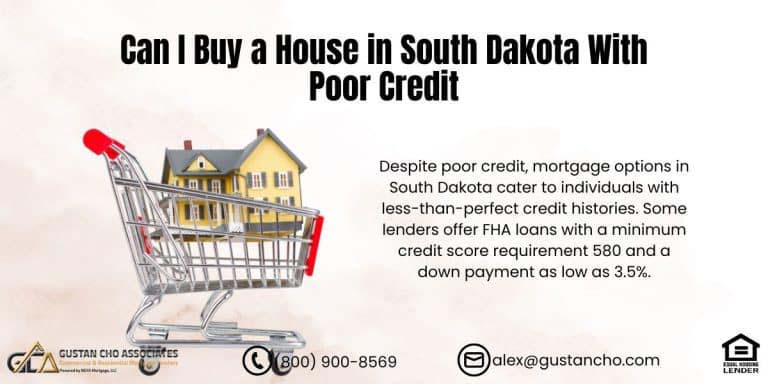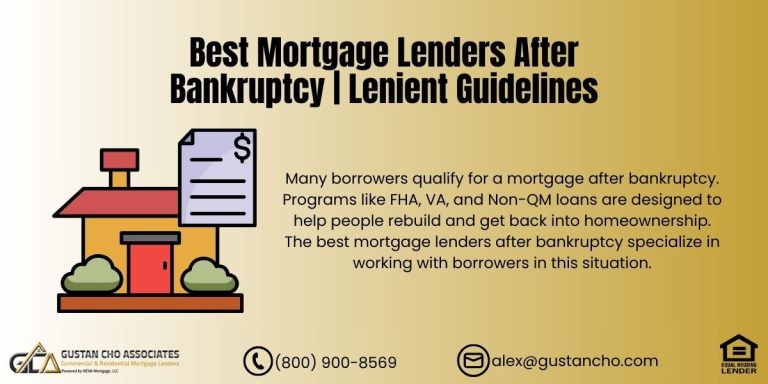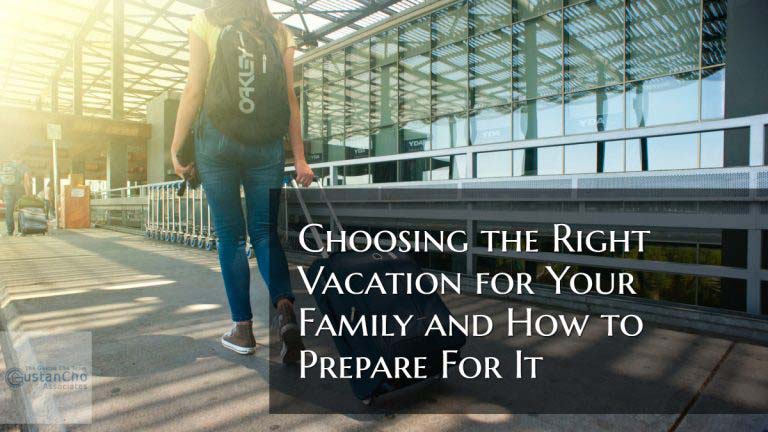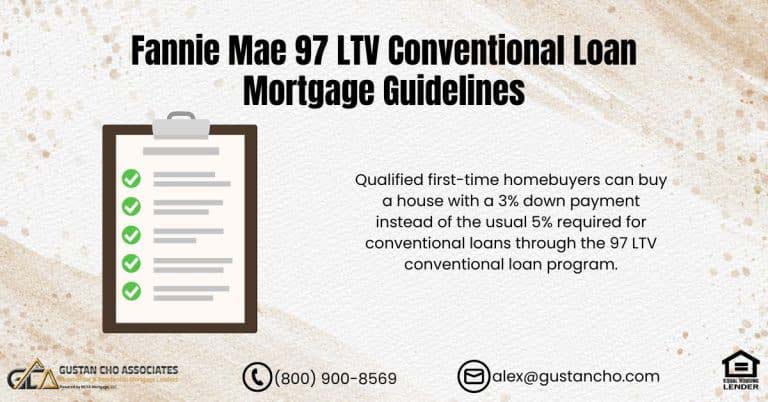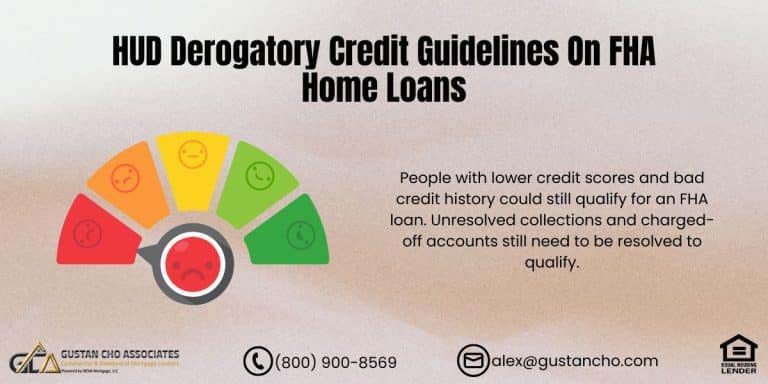In this article, we will discuss and cover refinance mortgage rates pricing adjustments, and volatility. Refinance Mortgage Rates hit a three-year high this week. Rates hit a historic low of 2.25% on a 30-year fixed-rate mortgage in 2019.
Mortgage rates skyrocketed to a three-year high of 7.25% in 2024. Since the beginning of the year, mortgage interest rates have been steadily dropping despite the Federal Reserve Board not cutting interest rates. In the following paragraphs, we will cover how mortgage lenders price the best refinance mortgage rates.
Refinance Mortgage Rates Volatility Concerns
Refinance mortgage rates volatility is a major concern for homeowners who are planning on refinancing or those who are in the refinance mortgage process. Dale Elenteny, a senior mortgage loan originator at Gustan Cho Associates says the following about refinance mortgage rates:
Loan officers should pay attention to locking refinance mortgage rates before it is too late. Mortgage rates can go up and down. However, if rates go up and do not make a correction, the refinance process is pretty much over.
The time and cost of the appraisal can go down the drain if homeowners who are refinancing already ordered a home appraisal and did not lock their rates.
Unlock the Best Refinance Rate
Learn how lenders price rates and how you can save money.
Mortgage-Backed Securities
Mortgage-backed securities tumbled again on Friday causing turmoil in the mortgage markets. The mortgage-backed securities market tanked by more than 200 basis points which marked the steepest one day drop in recent mortgage back securities history. Mortgage Rates have never been so volatile.
Mortgage Backed Securities Versus Refinance Mortgage Rates Volatility
When mortgage-backed securities drop and with mortgage rates volatility, mortgage rates rise. The capital markets including the mortgage bond markets are extremely volatile. There are days where the biggest rise in mortgage rates in a single day can happen as well as the biggest drop in rates.
We have witnessed the biggest single-day mortgage rates increase in a single day in history multiple time due to political uncertainty and the real estate and stock market bubble.
Mortgage rates have seen the sharpest increase in history in the past 18 months. Even with the holiday week, mortgage-backed securities is expected volatility. The previous two weeks, mortgage-backed securities have been on a roller coaster ride. Mortgage rates have dropped 0.5% the past few weeks on almost all mortgage loan programs. Mortgage rates have dropped for the 5th consecutive week.
Better Than Expected Employment Report Adds Fuel To The Fire
Friday’s employment report came in better than expected which plummeted mortgage-backed securities. This rallied the stock market and it was great news for the economy but the end result was mortgage rates rising. Labor analyst forecast 160,000 new jobs in June but records show that only 70,000 jobs were added. Revisions of past months lowers job numbers significantly. However, the unemployment rate remained at a constant of 4.6%.
Highest Mortgage Rates Volatility Since The Great Recession
The majority of the major banks were quoting mortgage rates just under the 5.0% mark for conventional conforming mortgage loans. FHA mortgage rates were at 6.3875% for prime borrowers with at least a 700 credit score. Just a little over a month ago, FHA mortgage rates for a 30 year fixed rate mortgage was 6.875%.
Where Are Mortgage Rates Headed?
Last week, mortgage rates hit a 36-month high after the Federal Reserve Board announced they will not be cutting interest rates for the remaining of the year despite pleas from President Donald Trump. This news from the FED skyrocketed rates instantly sent mortgage rates higher.
Due to talks about Trump firing Powell, mortgage rates have been steadily going lower in the past four weeks. It created somewhat of chaos with borrowers with mortgage rates that were not locked.
Despite the huge volatility of mortgage rates, home prices is not tanking and remain strong. There are homebuyers who are backing out of buying homes until there is a market correction.
Refinance Mortgage Rates Highest in 36 Months
Mortgage rates were at the highest levels in three years. Rates are higher now than it was prior to the 2008 Real Estate and Credit Meltdown. Many homebuyers closed their home loans in 2019 with mortgage rates at the 2.0% level. However, mortgage rates have been creeping up all year with no signs of correction. Fannie Mae and Freddie Mac announced huge loan level pricing adjustments on second homes and investment properties in early 2022.
Loan Level Pricing Adjustments on Second and Investment Homes Make Financing Difficult
Second-home and investment home buyers can expect to pay over 6.0% rates plus discount points. Many homebuyers with premium credit are closing their home loans at 5.75% plus discount points.
In this blog, we will discuss refinance mortgage rates and how prime borrowers need to pay discount points. Homeowners who took advantage of refinance mortgage rates early this year are sitting well.
Rates were at 2.25% on 30-year fixed-rate mortgages and 1.625% on 15-year fixed-rate mortgages in early 2019 through late 2021. Those rates were at the lowest level since 2007. Anyone with a mortgage interest rate over 5.0% or higher cannot benefit from today’s refinance mortgage rates.
VA And FHA Streamline Refinance Mortgages
Homeowners with VA and FHA loans are able to do VA and/or FHA streamline refinance mortgages. VA and FHA loans are the only two government loan programs that offer streamline refinances. Streamline refinance is a fast-track refinance loan program with limited documentation required.
There is no home appraisal, no income docs, and no credit scores required. However, homeowners with higher credit scores should take advantage of our credit score qualification streamline refinance program.
The reason being is that lenders will reward higher credit score borrowers with lower refinance mortgage rates. If and when mortgage rates plummet, homeowners who purchase a home with today’s high mortgage rates should consider doing a streamline refinance on FHA and/or VA loans. Keep an eye on the 10-year treasuries and mortgage rates.
Refinance Mortgage Rates on FHA and Streamline Refinance Mortgages
Most VA and FHA Streamlines close in 21 days or less. There is no money out of pocket on streamlines. Most streamline borrowers often get to skip two mortgage payments. Many streamline borrowers will get cashback due to escrow refunds and/or overages. Gustan Cho Associates are experts in VA and FHA Streamline Refinance.
Stop Guessing, Start Saving
Discover the real factors that lenders use to price your refinance.
Refinance Mortgage Rates on NON-QM To Traditional Mortgages
Non-QM loans are becoming more and more popular every year. Many homebuyers who do not qualify for government and conventional loans take advantage of non-QM mortgages as a bridge loan. NON-QM loans have much higher mortgage interest rates than traditional government and conventional loans.
Non-QM Loans After Foreclosure and Bankruptcy
There is no waiting period after bankruptcy, foreclosure, deed in lieu of foreclosure, or short sale. Borrowers with late payments in the past 12 months can qualify for non–QM loans.
Many non-QM borrowers have mortgage rates in the 7% to 9%. NON-QM borrowers can take advantage of refinancing non-QM to traditional government and/or conforming loans due to low mortgage rates.
Homeowners should keep an eye on the mortgage rate volatility and when rates plummet, they should consider doing a refinance to conventional and/or government loans.
Loan-to-Value Ratio (LTV)
The loan-to-value (LTV) ratio compares the loan amount to the appraised value of your home. A lower LTV—achieved by a larger down payment or home value appreciation—offsets lender risk. Higher LTV ratios often come with larger LLPAs, raising the price of an attractive rate. A refinance that takes your LTV above 80% will likely require mortgage insurance, further increasing costs.
Property Type and Occupancy Status
The type of property and how you occupy it also matter. Borrowed funds secured by primary residences usually come with the lowest pricing. Investment properties and vacation homes, rated riskier, can face price hikes of 1% or more. Condos, particularly those without warrantable status (part of the Fannie Mae or Freddie Mac guidelines), also attract LLPAs, sometimes by 2% or more.
Term of the Loan and Daily Market Movements
The loan term (15, 30 years, etc.) impacts pricing, with shorter terms often offering lower rates because of reduced risk and shorter interest duration. Lenders adjust rates and fees to reflect broader market movements—U.S. Treasury yields, geopolitical developments, and inflation data can shift the market pulse overnight. Stay flexible and consult your lender more than once to capture the lowest price, especially in a volatile market.
How to Secure the Best Refinance Rate
Nourish Your Credit Profile
Keep credit card balances well below limits, resolve small blemishes, and minimize hard inquiries. A 20-point credit score lift during the refinance can mean the difference between a historical rate and a price margin that adds up.
Target a Competitive Loan-to-Value Ratio
Position yourself below the 80% LTV threshold if you can. Increasing the appraised value or paying down the loan can trim the cost. Be cautious—adding private mortgage insurance (PMI) or raising your LTV further can hurt, so run a thorough break-even analysis.
Shop Smart and Keep Your Mortgage Term Intact
Collect multiple agency and lender quotes across a few months and evaluate based on the prices, not just the headline rates. If you want to lower your term (from 30 years to 20, e.g.), be sure your credit, collateral, and partnership pricing can sustain the change.
Look at the Right Moment
Rate locks, often free for 30 to 60 days, protect you from market moves. Lock the price once the loan is stable, the rate is acceptable, and you are comfortable with the break-even between the new rate and fees. If granted the choice between a free 30-day extension and a risky 60-day extension, overpay the small amount for the extension, especially in unsettled environments.
By mastering the pricing breakpoints that matter most to your refinancing scenario, you can capture a price equal to fewer years owed, smaller interest cost, or bigger home equity.
Loan-to-Value (LTV) Ratio
The Loan-to-Value ratio shows how much of your home’s value is covered by the loan you want to take. An LTV of 60–70% means you have more equity and less risk in the lender’s eyes, so your refinance rate is usually lower. If your LTV is higher, the lender charges a Loan Level Price Adjustment (LLPA), making the loan more expensive.
Debt-to-Income (DTI) Ratio
Your DTI also counts. Lenders compare your monthly debt payments to your income to check how much you can take on without strain. A high DTI doesn’t usually lead to a higher rate. However, it can block you from getting the lower rates available to borrowers with healthier debt loads.
Loan Type and Term
Different loan programs—like conventional, FHA, VA, USDA, and jumbo—have their own pricing. Like a 15-year refinance, a shorter loan term usually gives you a lower rate, but the monthly payment is higher. A 30-year term spreads the payments out, so the monthly payment is lower, but the rate is often higher.
Property Type and Occupancy
The home you’re refinancing matters. An owner-occupied single-family home generally receives the best pricing. Suppose the property is a rental, a second home, or a multi-family structure. In that case, the lender charges an LLPA that raises your rate.
Understanding Loan Level Price Adjustments (LLPAs)
What Are LLPAs?
Loan-level price Adjustments, or LLPAs, are risk-based fees set by Fannie Mae and Freddie Mac. These fees are usually included in your refinance mortgage rate rather than listed as a one-time upfront cost, making it easier to see how your mortgage rate will change based on the risk factors the lender sees in your loan application.
Common LLPAs That Affect Your Rate
- Credit Score: The lower your score, the higher your LLPAs.
- LTV Ratio: The higher the loan-to-value, the steeper the fee.
- Property Type: Condos, rental homes, and 2–4 unit properties often trigger LLPAs.
- Loan Purpose: Cash-out refinances usually incur larger LLPAs compared to rate-and-term refinances.
- Occupancy Status: Primary residences generally attract the lowest pricing.
- Second homes and investment properties cost more.
Lower Payments Could Be Closer Than You Think
Get clarity on rate pricing and maximize your savings.
Illustration: How LLPAs Actually Work
Suppose your credit score is 680 and your loan-to-value is 85%. You’ll incur LLPAs for both the score and the LTV. The lender may charge these fees upfront or raise your refinance mortgage rate to absorb the costs.
Get the Best Refinance Mortgage Rate
Boost Your Credit Score
Focus on paying down credit card balances, never miss a due date, and review your credit report for mistakes. Even a tiny score bump can bring your LLPAs down and decrease your mortgage rate.
Reduce Your LTV Ratio
If you can swing it, make an extra mortgage payment, or bring additional cash to the closing table. Lowering the balance compared to your home’s appraised value will cut fees and could lead to a lower rate.
Pick the Right Loan Term
Choosing a shorter 15-year mortgage can lower your interest rate. However, your monthly payment will be higher, so ensure that it fits your budget.
Compare Quotes From Different Lenders
Each bank or credit union might offer a different rate for the same loan information. Getting quotes from at least three places can save you a good chunk of money over the life of the loan.
Go Through a Broker With No Overlays
A good mortgage broker can pull rates from several wholesale lenders. If you find one that doesn’t add overlaid charges, you might get flexible terms or a lower interest rate than a big bank would offer.
Reasons Lender Pricing Differs
You and your neighbor might seem the same on paper, but rates can still differ. Here’s why:
- Daily Market Moves: The bond market can swing daily, nudging rates any morning.
- Lender Profit: Banks and credit unions add a margin that varies from lender to lender.
- Investor Deals: If investors are hungry for one type of loan, like a VA loan, lenders may lower rates to attract that business.
Wrap-Up on Refinance Mortgage Rate
Mortgage rates aren’t random; they result from several moving parts. The better you understand Loan-Level Price Adjustments (LLPAs) and how they apply to you, the better you can shop and the more you can save.
Enhancing your credit score, cutting your loan-to-value (LTV) ratio, and teaming up with a lender or broker that offers top-notch pricing without extra, unnecessary fees set you up for the best refinance mortgage rates you can get.
FAQ: Refinance Mortgage Rates
What Are Refinance Mortgage Rates?
These rates tell you the cost to borrow money again, as you swap your current mortgage for a brand-new loan with a fresh rate.
How Do LLPAs Impact Refinance Mortgage Rates?
Loan-Level Price Adjustments, or LLPAs, are fees that can push the rate higher. Risk signs, like your credit, LTV, and property type, trigger them. You can pay them upfront or see them baked into your rate.
Why Are Cash-Out Refinances Pricier?
When you withdraw cash and replace the loan, you increase debt, which worries lenders more. This refinance collects larger LLPAs and comes with a higher interest rate.
Can I Skip LLPAs?
Complete avoidance can be tough, but you can trim the fees by boosting your credit, reducing your LTV, or selecting a loan that looks safer to the lender.
Do All Lenders Charge LLPAs?
Lenders do apply them to conventional loans sold to Fannie Mae and Freddie Mac. FHA, VA, and USDA loans, however, don’t have the same pricing, which is often why they are a good fit for certain borrowers.
How Often Do Refinance Mortgage Rates Change?
These rates can fluctuate every single day—or even several times a day—depending on how the broader market is moving.
Does My DTI Ratio Affect My Rate?
Your DTI won’t directly influence the rate you get. However, it plays a big part in whether you qualify for the top refinancing options.
Are Refinance Mortgage Rates Higher Than Purchase Rates?
Not always. Cash-out refinances often have higher rates, but a straight rate-and-term refinance can be roughly the same or even lower than a purchase rate.
Can I Negotiate Refinance Mortgage Rates?
You can’t haggle on LLPAs, but comparing offers from different lenders can help you locate the best rate combined with the lowest closing costs.
Should I Lock My Refinance Mortgage Rate?
Absolutely. If you see a rate you like and the market feels shaky, locking it in secures that rate from rising before you close.
Will Refinance Mortgage Rates Drop?
Home prices have increased in most parts of the U.S. The Federal Housing Finance Agency (FHFA) has increased conforming loan limits for nine years in a row due to high home prices. HUD has followed FHFA’s lead in increasing FHA Loan Limits for six years in a row.
Many homeowners do not realize how much their home has appreciated in value in the past few years. In some areas, home prices have seen double digit appreciation year after year.
Homeowners should consider doing a cash-out refinance to pay off their debts. Taking cash-out from your home’s equity is tax-free. No taxes need to be paid from the proceeds in a cash-out refinance. Homeowners can do whatever they like with the proceeds of a cash-out refinance. Home improvements, paying off high-interest credit card debts and making investments are common things many homeowners use with their cash-out refinance proceed. Mortgage rates will plummet. When rates drop, it will drop like a rock. Every homeowner should keep an eye on mortgage rates. When rates plummet, be ready to refinance.
Rates Change Fast—Don’t Miss Out
Understanding pricing is the first step to locking in savings.





